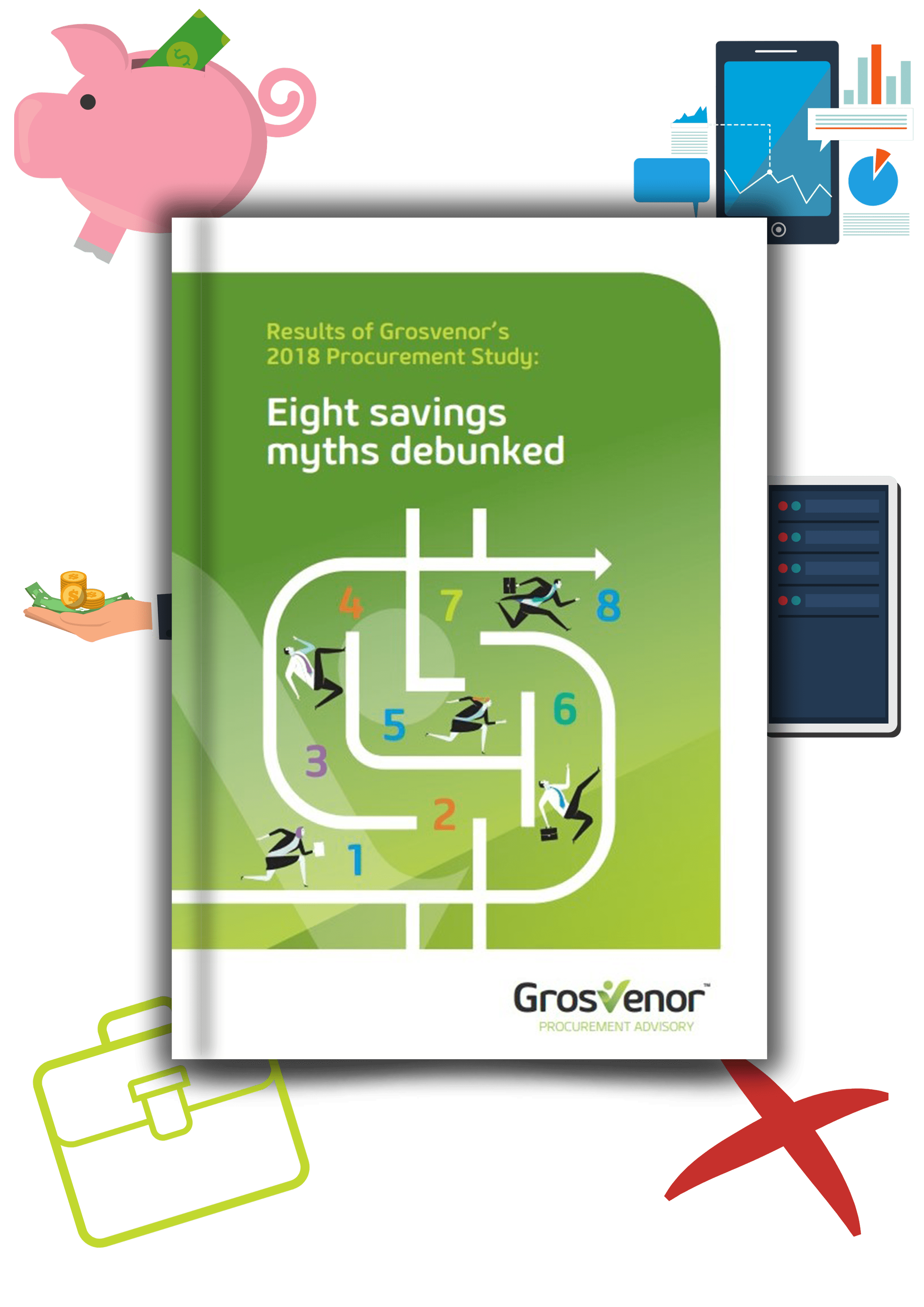Some surprising facts from our 2018 Procurement Study

Our 2018 procurement study “Eight savings myths debunked” was expected to stir the pot. It’s easy to allow assumptions and preconceived ideas about finding cost savings to influence where to look and what to expect.
How often do we challenge some of these ideas?
Are you even aware you operate with these assumptions?
Well this report was intended to put some data behind this and see if we could shake anything out of the tree by testing some long-held ideas that we come across all the time or find new insights that would challenge what we thought was true.
Now that the data is in and we’ve completed the report, I wanted to pick out a few interesting facts the results have thrown out. What the results seem to be pointing to is there are significant cost savings up for grabs, even when the well looks dry.
Taking a second look through the lens of our insights may help you see the opportunity – one that’s always been there but hidden from view.
Most procurement folk only expect a maximum 10% savings from any single initiative.
Yet, the data shows, most organisations are able achieve far more than 10%, one in five even more than 20%!
From my advisory work to procurement teams, there’s a wildly held expectation that finding more than 10% cost savings is extremely difficult. Understandably, savings of less than 10% may not be worth pursuing and therefore remain low on the list of priorities.
Based on our data, most of the respondents were able to achieve well in excess of 10% savings from just one initiative over the last 12 months. This surely points to a hidden potential for substantial savings that may have been passed over, just because of false expectations.
Reducing spend is often accompanied by a lowering of expectations of quality and expecting reduced levels of performance.
Yet, over 25% of organisations found they had improved their quality of products, outcomes delivered and lifted the level of performance by reducing spend!
Almost all of the organisations surveyed not only drove savings but at the same time created other benefits including better performance, innovation, lower risk exposure and higher customer satisfaction.
Whichever way you slice the numbers, they are counter-intuitive but remain consistent with our own research. Quality and price are still connected, but it’s clear that working through the processes to reduce spend, seems to encourage better performance , lower levels of waste and less overcharging.
Aggregating spend to one supplier across the business should increase buying power and drive price per unit down.
Yet, most organisations who have done this, weren’t able to yield any significant benefits!
Aggregation is a common tactic of procurement teams, but as our research trends have revealed in previous years, the “pay less” spend lever just isn’t delivering savings like it used to.
The data reveals that respondents that started aggregating spend during this procurement initiative, saved less than those who market tested spend that was already aggregated in the previous contract.
There are two conclusions we’ve been able to draw into why this pattern is occurring:
- Aggregation at first introduces complexities that erode some savings initially but lead to higher savings in subsequent procurements
- The respondents were not able to fully leverage their buying power when procuring for the first time









 We are all about sharing our expertise to help you and your organisation be the best it can be.
We are all about sharing our expertise to help you and your organisation be the best it can be.